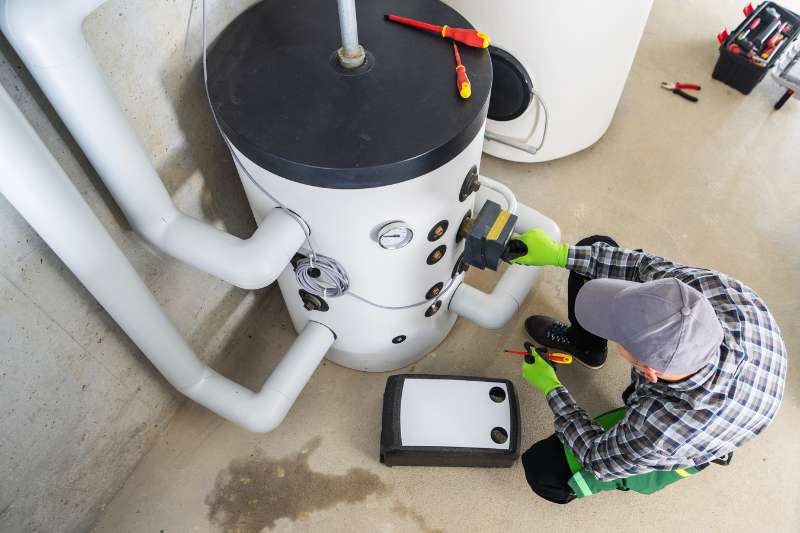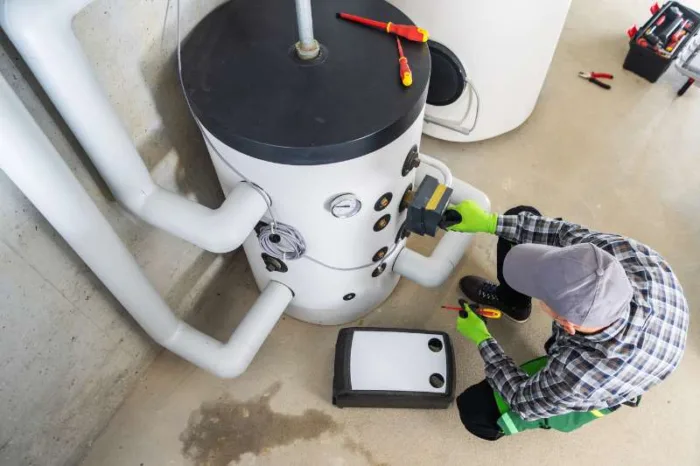Key takeaways
- Commercial building maintenance refers to the ongoing upkeep and management of commercial properties.
- Cleaning, plumbing, electrical systems, and structural integrity are just a few building maintenance basics.
- An effective maintenance plan includes assessment and prioritization, scheduling, implementation and monitoring, and a review with necessary adjustments.

Property maintenance is an essential aspect of real estate that plays a vital role in the success of your business. Neglecting commercial building maintenance leads to serious consequences, such as safety hazards, repair costs, and lower customer satisfaction.
For those reasons, we provide a useful checklist to help you keep up with commercial building maintenance. In addition, you’ll learn the basics of maintaining commercial buildings and how to create a maintenance plan for your property.
This guide covers:
- What is the meaning of commercial maintenance?
- What are the basics of building maintenance?
- Commercial building maintenance checklist
- How do I create a building maintenance plan?
- Commercial building maintenance FAQs
What is the meaning of commercial maintenance?
Commercial maintenance refers to the ongoing upkeep, repair, and management of commercial properties, such as offices, retail spaces, and industrial facilities.
The goal of commercial maintenance is to preserve the functionality, safety, and appearance of commercial buildings. Different types of commercial building maintenance address various problems.
The types of commercial building maintenance include:
- Preventative. Upkeep is performed to prevent systems or equipment from slowing, wearing, or shutting down completely. Preventative property maintenance is performed based on the amount of time that’s passed or based on a change in the system’s performance.
- Routine. Regularly scheduled maintenance helps maintain the functionality or appearance of the building. These inspections also help catch potential issues before they advance.
- Corrective. Maintenance is undertaken to repair any damage or inefficiency within the building as it arises.
- Emergency. In urgent or unexpected situations, emergency maintenance helps address disruptions immediately.
- Compliance and regulatory. This aspect of building maintenance ensures the property adheres to relevant regulations, such as building codes.
- Safety and security. Maintaining a building’s safety and security features, such as fire alarms and emergency exits, is crucial for protecting building occupants.
What are the basics of building maintenance?
Commercial building maintenance involves many tasks that preserve a building’s functionality, safety, and appearance. However, all duties can be categorized in a handful of basic areas regardless of the property.
The basics of commercial building maintenance include:
Cleaning
A clean building improves its appearance and promotes safety and well-being for employees, residents, visitors, and others. Plus, cleanliness creates an inviting environment, which is essential when trying to attract potential customers or tenants.
So, incorporate a cleaning routine that includes:
- Common areas
- Restrooms
- Workspaces
- Elevators
- Kitchens or breakrooms
- Trash and recycling areas
- High-touch surfaces
- Windows and doors
- Entryways and exterior areas
Learn how to clean the ButterflyMX video intercom:
HVAC system
Like cleanliness, HVAC systems play a role in the comfort of your building. However, HVAC systems, such as restaurants with commercial coolers and freezers, are also essential for building operations. Without a working HVAC system, restaurants can’t store food properly, which hinders their ability to provide service to customers.
Therefore, you should have your HVAC system inspected at least once a year, but two times is best. Get your system’s heating inspected in the fall and AC in the spring. This way, you can catch potential heating or cooling problems before you need them, preventing discomfort among occupants.
Lighting
Effective lighting throughout your building enhances visibility, which in turn improves safety for individuals. Not to mention, maintaining lights helps maintain a professional environment throughout your daily operations and minimizes energy consumption. Inspect lighting fixtures and replace light bulbs when necessary to reap these benefits.
Exterior
The exterior of your building will experience numerous elements that will slowly cause wear and tear. To maintain curb appeal, exterior doors, windows, siding, and roofing must be maintained. Doing so will help you maintain the first impression your business gives to visitors, which is, after all, one of the most critical aspects of any property.
Electrical
A well-maintained electrical system ensures your building’s equipment and security will continue to operate. After all, your building’s access control system is vital for the safety of building occupants. Moreover, your electrical system should be inspected annually to help prevent safety hazards like short circuits, power outages, and electrical fires.
Plumbing
Undetected water damage can harm building materials and have a substantial financial impact on your business. Like electrical systems, it’s crucial to conduct annual plumbing inspections. These inspections help identify potential leaks, clogs, or water heater issues, reducing the risk of severe water damage.
Structural
The structural integrity of a building is often overlooked because it’s out of sight. However, preserving your building’s integrity is essential for its longevity and occupant safety. An annual building inspection will help identify the state of walls, ceilings, floors, and support structures. Discovering problems in these areas allows you to prevent them from escalating, benefiting the wellness of your business.
Commercial building maintenance checklist
We’ve created a checklist to help you stay on top of your commercial building maintenance. However, we recommend you customize the checklist to fit your commercial building’s unique features and needs.
How do I create a building maintenance plan?
A building maintenance plan helps your business achieve its goals by effectively managing maintenance, thereby reducing the disruption caused by repairs. Plus, building occupants will have a better experience when your team can promptly address maintenance issues, ensuring a safe and comfortable environment for everyone.
Follow these steps to create a commercial building maintenance plan:
- Assess and prioritize. Inspect the many physical assets and areas of your building to determine what should be added to the routine and preventive maintenance programs. Then, prioritize duties based on their importance to the property.
- Schedule development. Establish a maintenance schedule that details when tasks should be performed while considering factors like seasonality or occupancy. Thus, you can reduce time-consuming tasks and get more done during the most essential hours of the day.
- Implement and monitor. Assign roles and responsibilities to your maintenance staff and implement a way to monitor maintenance duties, such as a ticketing system. During this process, you should collect as much feedback and data as possible to make actionable decisions later.
- Review and adjust. Review the data and feedback you receive from your monitoring system. Then, take time to adjust your commercial building maintenance plan so that it can better solve the pain points you’re experiencing.
How do you budget for building maintenance?
Commercial building maintenance costs can quickly get out of hand if you don’t budget correctly. Fortunately, we’ve got just the tips you need to budget for commercial building maintenance.
Here are some tips to help you budget for building maintenance:
- Analyze maintenance costs from previous years to determine your budget for the upcoming year.
- Consider the type of business you operate and the age and location of the building.
- Weigh the options of hiring an in-house team or commercial building maintenance services.
- Consider the seasonal maintenance your property will need to implement.
- Don’t forget hidden costs, such as invoice processing fees, procurement, or software licensing.
- Try to set aside some portion of your budget for potential emergencies caused by unexpected events like natural disasters.
- Make sure to leave room in your budget for potential changes that may occur.
Commercial building maintenance FAQs
Here are the answers to some of your frequently asked questions about commercial building maintenance:
- What is an example of building maintenance?
- What is commercial facility maintenance?
- What is the difference between commercial building maintenance and facility maintenance?
What is an example of building maintenance?
Inspecting and assessing the heating, ventilation, and air conditioning (HVAC) system is a real-world example of building maintenance. HVAC systems are essential for a property’s comfort and, in some cases, its operation.
Maintaining an HVAC system involves regular inspections, especially before the summer and winter months. This way, potential duct leaks or other problems can be caught before they become severe. Additionally, the air filters should be inspected and changed when necessary.
What is commercial facility maintenance?
Commercial facility maintenance is managing the upkeep of an entire commercial property, which may include multiple buildings, landscaping, or parking lots.
Overall, commercial facility maintenance aims to ensure the entire property functions smoothly and efficiently while providing a safe and secure environment for individuals.
What is the difference between building maintenance and facility maintenance?
While building maintenance and facility maintenance are often used interchangeably, they differ in the scope of maintenance they cover.
Building maintenance focuses on the upkeep and repair of individual structures on a property. On the other hand, facility maintenance has a broader scope and encompasses the upkeep and management of an entire property.








